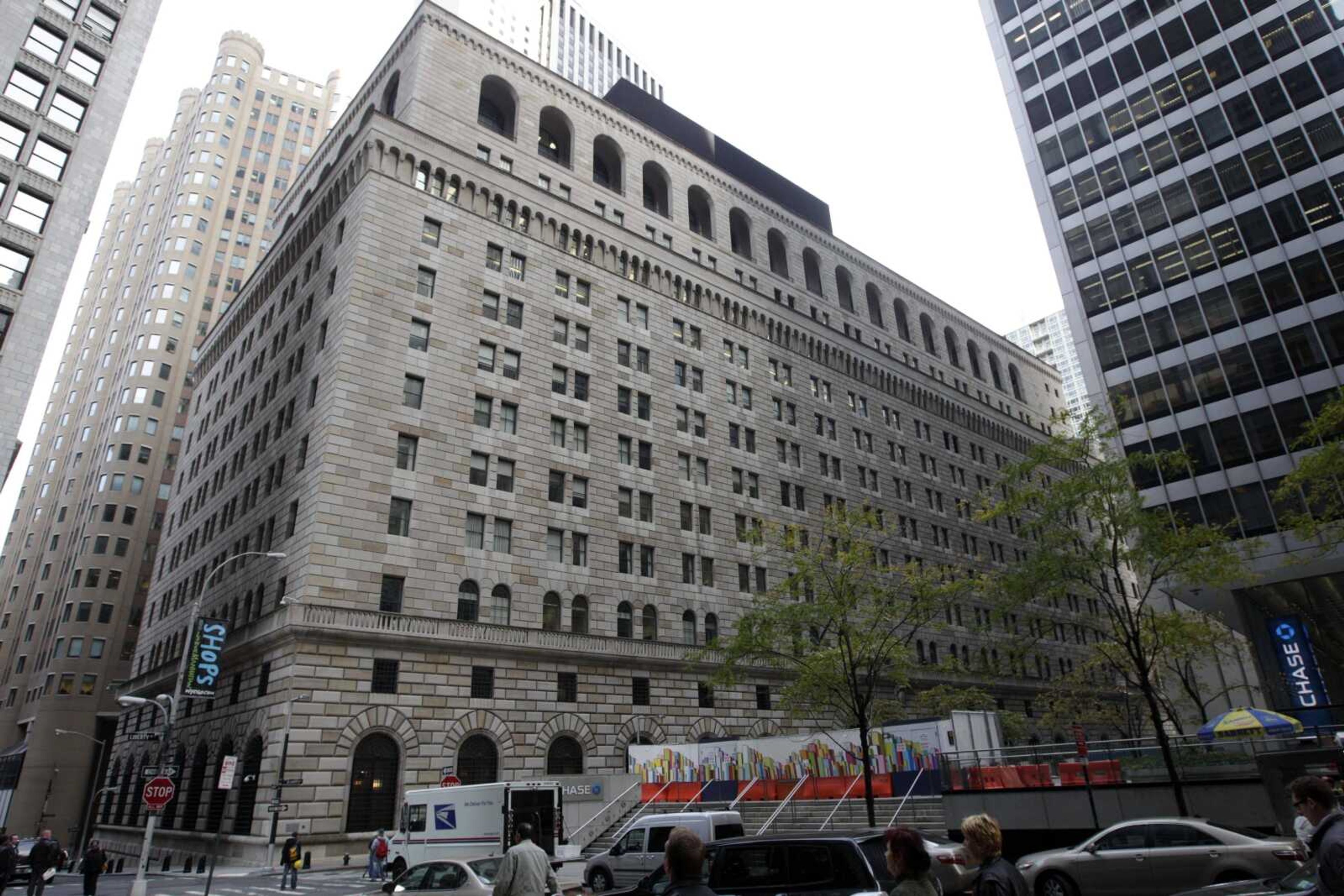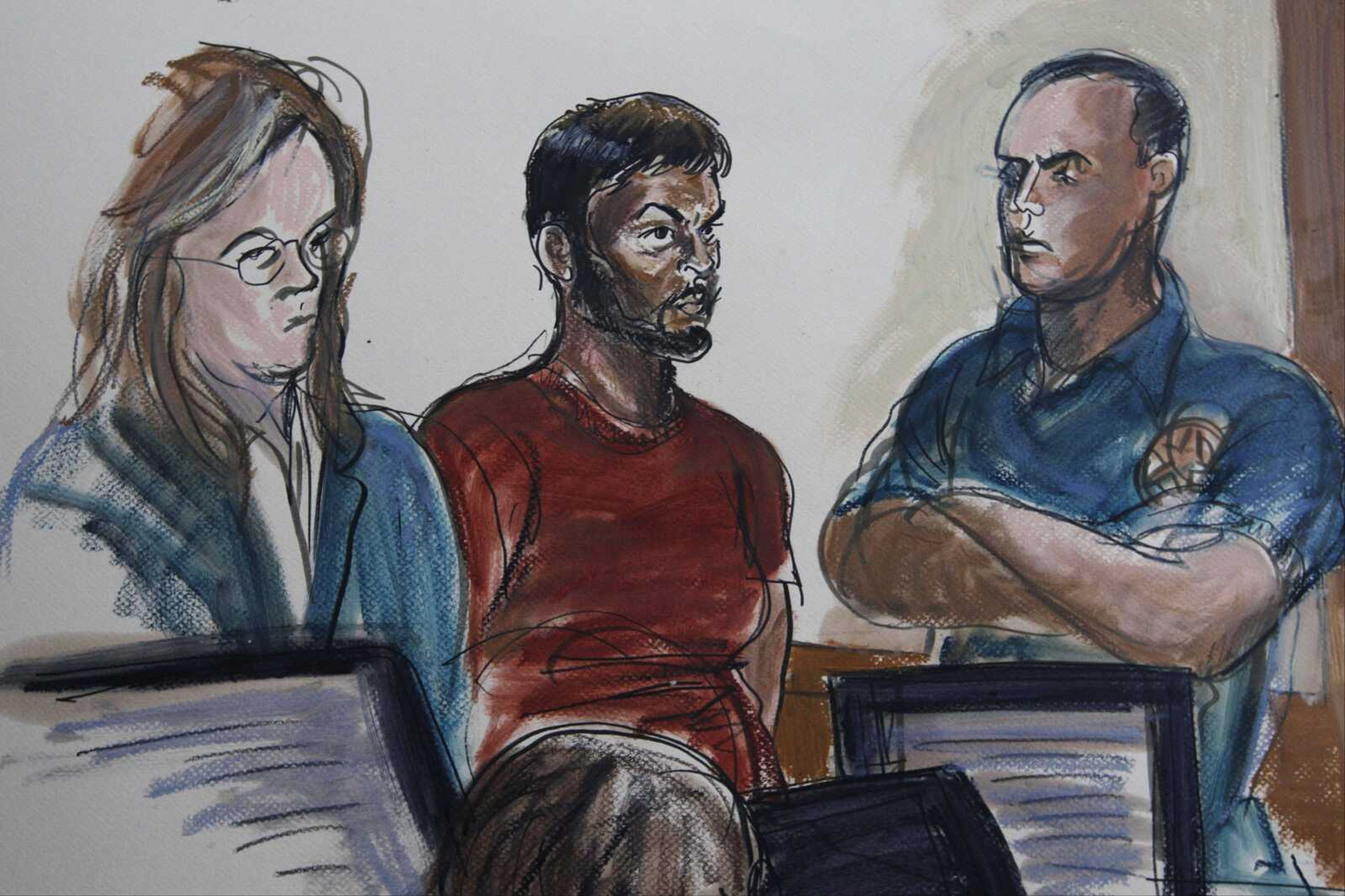Feds: 1 arrested in plot to attack Federal Reserve; was former SEMO student
NEW YORK (AP) -- A Bangladeshi man and former Southeast Missouri State University student who came to the United States to wage jihad was arrested in an elaborate FBI sting on Wednesday after attempting to blow up a fake car bomb outside the Federal Reserve building in Manhattan, authorities said.
Download the complaint against Nafis
NEW YORK (AP) -- A Bangladeshi man and former Southeast Missouri State University student who came to the United States to wage jihad was arrested in an elaborate FBI sting on Wednesday after attempting to blow up a fake car bomb outside the Federal Reserve building in Manhattan, authorities said.
Before trying to carry out the alleged terrorism plot, Quazi Mohammad Rezwanul Ahsan Nafis went to a warehouse to help assemble a 1,000-pound bomb using inert material, according to a criminal complaint. He also asked an undercover agent to videotape him saying, "We will not stop until we attain victory or martyrdom," the complaint said.
Agents grabbed the 21-year-old Nafis -- armed with a cellphone he believed was rigged as a detonator -- after he made several attempts to blow up the bomb inside a vehicle parked next to the Federal Reserve, the complaint said.
Nafis was a student at Southeast Missouri State University in Cape Girardeau during the spring semester of 2012, from January to May, said university spokeswoman Ann Hayes. He was pursuing a Bachelor of Science degree in cybersecurity.
Hayes said that Nafis requested a transfer of his records in July, and the university followed protocol outlined by the Homeland Security Department in transferring those records, though she couldn't say where they were transferred.
Nafis was enrolled in 12 credit hours, she said.
Hayes said the news came as a surprise to university officials.
"It certainly was, and we recruit international students, and they bring a lot to our campus, so it's very unfortunate to hear this," she said.
The campus is home to 830 international students from 53 countries, Hayes said.
Cape Girardeau Police Department spokesman Darin Hickey said the department was contacted by the FBI and told to refer any calls to the FBI. Hickey said the FBI didn't ask for assistance in the investigation.
Authorities emphasized that the plot never posed an actual risk. However, they claimed the case demonstrated the value of using sting operations to neutralize young extremists eager to harm Americans.
"Attempting to destroy a landmark building and kill or maim untold numbers of innocent bystanders is about as serious as the imagination can conjure," said Mary Galligan, acting head of the FBI's New York office. "The defendant faces appropriately severe consequences."
Nafis appeared in federal court in Brooklyn to face charges of attempting to use a weapon of mass destruction and attempting to provide material support to al-Qaida. Wearing a brown T-shirt and black jeans, he was ordered held without bail and did not enter a plea. His defense attorney had no comment outside court.
The defendant had sought assurances from an undercover agent posing as an al-Qaida contact that the terrorist group would support the operation.

"The thing that I want to do ask you about is that, the thing I'm doing, it's under al-Qaida?" he was recorded saying during a meeting in bugged hotel room in Queens, according to the complaint.
In a September meeting in the same hotel room, Nafis "confirmed he was ready to kill himself during the course of the attack, but indicated he wanted to return to Bangladesh to see his family one last time to set his affairs in order," the complaint said.
But there was no allegation that Nafis actually received training or direction from the terrorist group.
Prosecutors say Nafis traveled to the U.S. on a student visa in January to carry out an attack. In July, he contacted a confidential informant, telling him he wanted to form a terror cell, the criminal complaint said. Nafis was living in Queens.
In further conversations, authorities said Nafis proposed several spots for his attack, including the New York Stock Exchange -- and that in a written letter taking responsibility for the Federal Reserve job he was about to carry out, he said he wanted to "destroy America." Other communications took place through Facebook, the complaint said.
A Twitter account with the suspect's name and photo had six followers and two messages and was linked to a Facebook page that had been taken down.
Police Commissioner Raymond Kelly said the case is one more reminder that New York remains a target:
"New York continues to be very much in the mind frame of terrorism. This individual came here with the express purpose of committing a terrorist attack, he was motivated by al-Qaida. We see this threat as being with us for a long time to come."
Kelly said security is always a precaution and there are about a thousand officers in the counterterrorism division. He didn't specify if any additional measures were being taken.
The bank, located at 33 Liberty St., is one of 12 branches around the country that, along with the Board of Governors in Washington, make up the Federal Reserve System that serves as the central bank of the United States. It sets interest rates.
The Federal Reserve is one of the most fortified buildings in the city, smack in the middle of a massive security effort headed by the New York Police Department where a network of thousands of private and police cameras watch for suspicious activity.
The department uses sophisticated programs that can search for suspicious activity, like an object in one place for a long time, at the building modeled after London's "ring of steel." The analytic software also is designed to take video and catalog it according to movements, shapes and colors, so officers can set parameters to search the system for, say, a suspicious van.
The Fed is also home to the world's largest accumulation of gold, according to the bank's website. Dozens of governments and central banks store a portion of their gold reserves in high-security vaults deep beneath the building. In recent years, it held 216 million troy ounces of gold, or more than a fifth of all global monetary gold reserves, making it a bigger bullion depository than Fort Knox.
The federal case was the latest where a terrorism plot against the city turned out to be a sting operation.
Four men were convicted in 2009 in a plot to bomb synagogues and shoot down military planes with missiles -- a case that began after an FBI informant was assigned to infiltrate a mosque in Newburgh, about 70 miles north of New York City. The federal judge hearing the case said she was not proud of the government's role in nurturing the plot.
In 2004, a Pakistani immigrant was arrested and convicted of a scheme to blow up the subway station at Herald Square in Midtown. His lawyers argued that their client had been set up by a police informant who showed him pictures of Iraq abuse to get him involved in an attack against civilians.
Southeast Missourian managing editor Matt Sanders contributed to this report.
Connect with the Southeast Missourian Newsroom:
For corrections to this story or other insights for the editor, click here. To submit a letter to the editor, click here. To learn about the Southeast Missourian’s AI Policy, click here.









